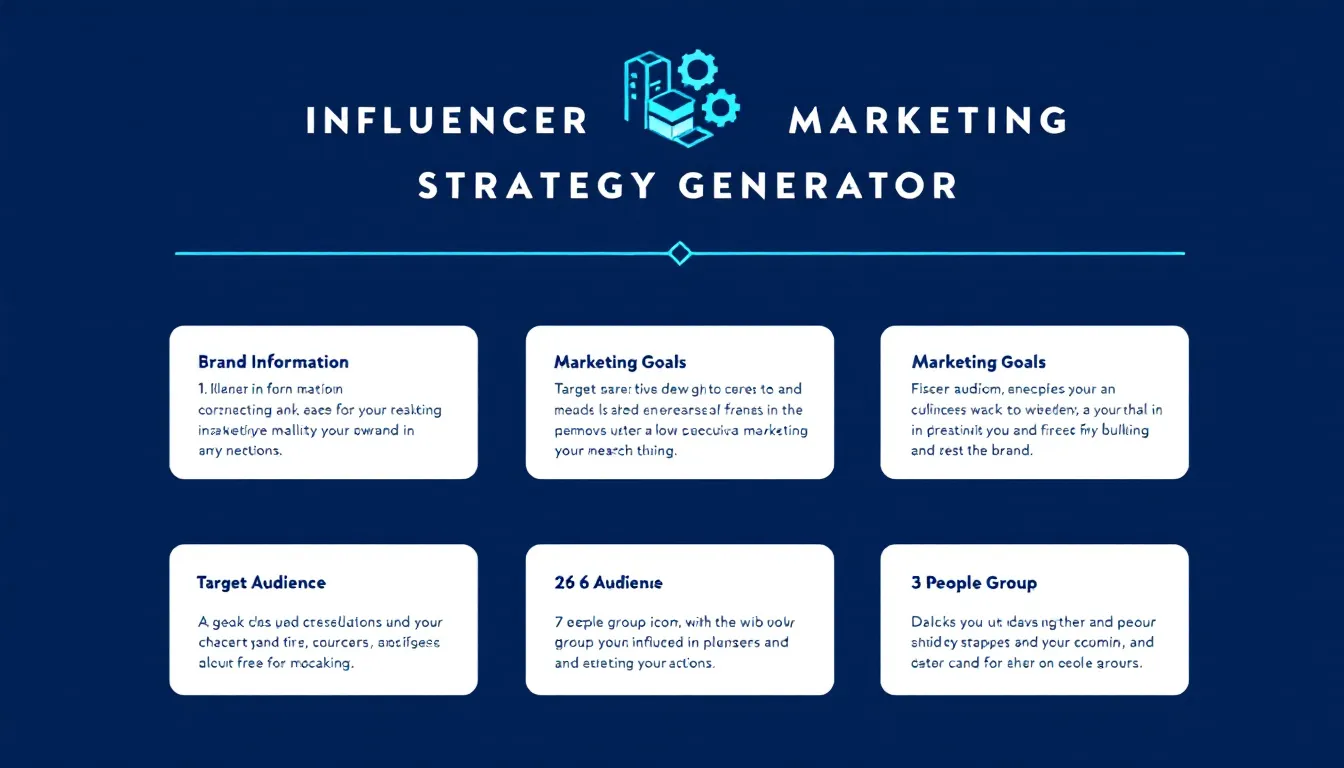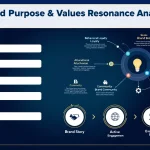Is this tool helpful?
How to Use the Influencer Marketing Strategy Generator Effectively
1. Brand Information
Provide your brand name along with a short description that captures your business identity. Here are two examples to guide you:
- Example 1: “UrbanBloom – Eco-friendly home and garden supplies designed for city living”
- Example 2: “SmartStyle Apparel – Affordable tech-enabled activewear for busy professionals”
2. Marketing Goals
Clearly state measurable goals for your influencer campaign. These help tailor your strategy. Examples include:
- Boost YouTube channel subscriptions by 30% within 4 months
- Generate 8,000 email signups through influencer promotions
3. Target Audience Details
Describe your ideal customers with specifics like age, interests, and behaviors. For instance:
- Young entrepreneurs aged 22-35, interested in productivity and business tools
- Outdoor enthusiasts from North America who engage frequently on social channels
4. Brand Values and Messaging
State the principles and messages defining your brand’s identity. Consider:
- Sustainability, transparency, and community focus
- Innovation, reliability, and customer empowerment
5. Budget Input (Optional)
Indicate your campaign budget in USD. You can include decimal amounts for accuracy, such as “2500.50” or “15000.” This helps align recommendations realistically.
6. Campaign Timeline (Optional)
Specify how long you want your campaign to run. Examples:
- “8 weeks”
- “5 months”
What Is the Influencer Marketing Strategy Generator?
This tool creates tailored influencer marketing plans based on your input. It uses your brand details, goals, audience, and values to suggest precise campaign strategies. The result is an actionable plan that aligns your marketing efforts with influencer partnerships designed to maximize your reach and engagement on social platforms.
Purpose and Key Benefits
- Save time: Automate campaign planning instead of starting from scratch.
- Refine targeting: Build strategies that connect deeply with your specific audience.
- Align brand and influencers: Ensure your messaging and values stay consistent.
- Optimize resources: Tailor your budget and timeline for maximum impact.
Practical Usage of the Strategy Generator
Use this form-based tool to submit your campaign details directly through an easy interface. It processes your entries and generates:
- Recommended influencer types and segmentations based on your audience
- Platform-specific content and engagement strategies
- Suggested campaign timelines and budget breakdowns
- Performance metrics to track along the way
For example, if you enter a campaign budget of 8000 USD and a timeline of 3 months, the tool might recommend:
- Partnering with 7 micro-influencers across Instagram and TikTok
- Rolling out a weekly content calendar with product tutorials and giveaways
- Allocating funds primarily to influencer fees and content development
Why Use This Influencer Marketing Strategy Generator?
1. Streamline Your Campaign Planning
You avoid guesswork by receiving a ready-made roadmap that fits your brand and audience perfectly.
2. Make Data-Driven Decisions
Focus your budget on strategies proven to work with your target group and platform preferences.
3. Achieve Better Alignment
Ensure influencer choices, content themes, and campaign goals all reinforce your core brand values for consistent messaging.
Additional Tips for Maximizing Campaign Success
Cross-Platform Strategy
- Coordinate messaging across Instagram, TikTok, YouTube, and Facebook for broader reach.
- Tailor content to platform strengths (e.g., short videos, stories, or longer tutorials).
Build Lasting Influencer Partnerships
- Consider ambassador roles to keep influencers engaged long term.
- Invite exclusive collaborations to strengthen the relationship.
Repurpose Content Strategically
- Adapt influencer-created content for your own channels.
- Create multiple assets from single collaborations to maximize ROI.
Important Disclaimer
The calculations, results, and content provided by our tools are not guaranteed to be accurate, complete, or reliable. Users are responsible for verifying and interpreting the results. Our content and tools may contain errors, biases, or inconsistencies. Do not enter personal data, sensitive information, or personally identifiable information in our web forms or tools. Such data entry violates our terms of service and may result in unauthorized disclosure to third parties. We reserve the right to save inputs and outputs from our tools for the purposes of error debugging, bias identification, and performance improvement. External companies providing AI models used in our tools may also save and process data in accordance with their own policies. By using our tools, you consent to this data collection and processing. We reserve the right to limit the usage of our tools based on current usability factors.







